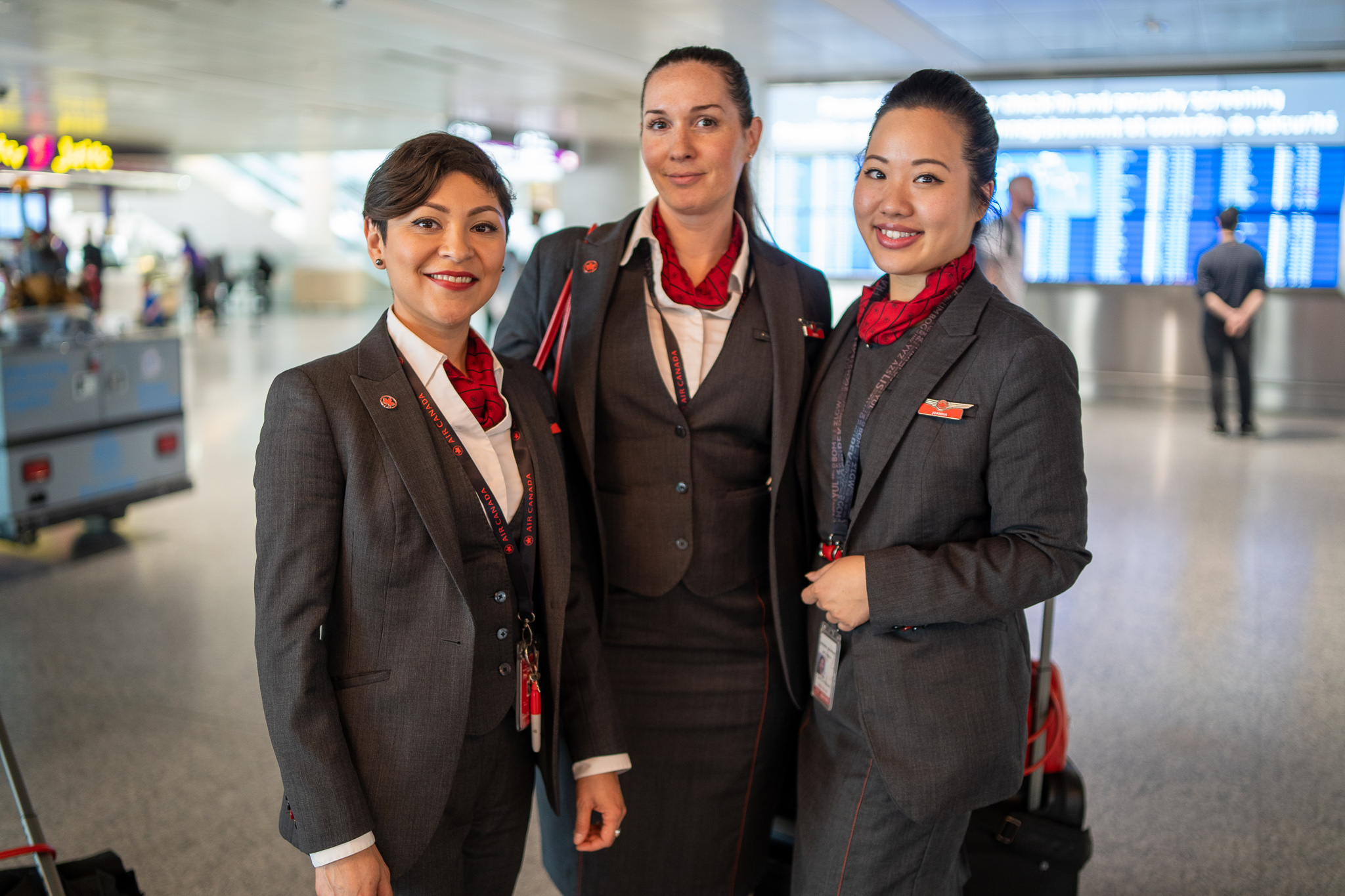The Air Canada Component of the Canadian Union of Public Employees (CUPE), represents more than 10,000 flight attendants at Air Canada and Air Canada Rouge. Our members are based in Vancouver, Calgary, Toronto, and Montreal.
Air Canada’s Flight Attendants are highly trained professionals who play a key role in ensuring the safety and comfort of over 90,000 passengers who travel each day in Canada and around the world. Flight Attendants are the front-line for safety and security in the air. Our members are crucial to the business infrastructure of Canada.
Security of Canada’s aircraft and safety of the flying public is a top-of-mind issue for our members. We have a constant, vigilant focus on the safety and security of our passengers; a challenge we are well equipped to handle.
Our union focuses on the unique needs of our members who are advocating and protecting the security of our passengers.
We want our members to have the highest possible wage standards, job security, and conditions of employment. The Air Canada Component of CUPE administers and enforces the collective agreement; we ensure that our members are consistently and thoroughly trained and updated, not only to protect their own safety and security, but also that of our passengers.
The union leadership is dedicated to providing our membership with an effective and united voice so that our employer, our governments, and our passengers can confidently acknowledge our members as safety professionals.

Our objective is to advance the social, economic, and overall working conditions of the membership while ensuring members’ rights to full participation in the union with zero tolerance for discrimination of any kind.
The early days of Canadian passenger flight were rough. Flights were bumpy, planes tended to fly at 10,000 feet and cabins were not pressurized, passengers stayed in their seats to conserve energy. The only oxygen on the plane was for the pilots. Coffee was served in Styrofoam cups from a large thermos by flight attendants.
The flight attendants role has evolved with passenger flight.
In the late 1940’s flight attendants and other workers independently formed unions, in 1948 they merged to create the Canadian Air Line Flight Attendant’s Association, the group was certified to represent all purser/stewards and stewardesses. By 1949 Canada was flying to Australia and the first collective agreement had been negotiated.
In the 1950’s the union fought for limits on the number of hours in the air, better salaries and working conditions for flight attendants.
The 1960’s saw an increased focus on safety and an attention to the safety requirements of a changing era. Also the government enshrines the flight attendants role in safety procedures in 1969 when they released the first Air Navigation Order addressing issues such as crew training, emergency procedures, and crew complement — this is the first formal acknowledgement of cabin crew in Canada.
Throughout the 1970s the union fought for permanent rights, proactively taught safety lessons, pushed the government to enforce regulations.
In the 1980’s and 1990’s; major expansions of air flight capacity in Canada created some tough times for the carriers employees. Several major carriers were on strike in the 80’s and 90’s. The late 1980‘s saw the privatization of Air Canada and the introduction of “open skies.” The late 1990’s brought many closures, mergers and changes to the industry. Throughout all of this the union we now know as the Air Canada Component of CUPE have been fighting for the rights of flight attendants and working to ensure safety of passengers.